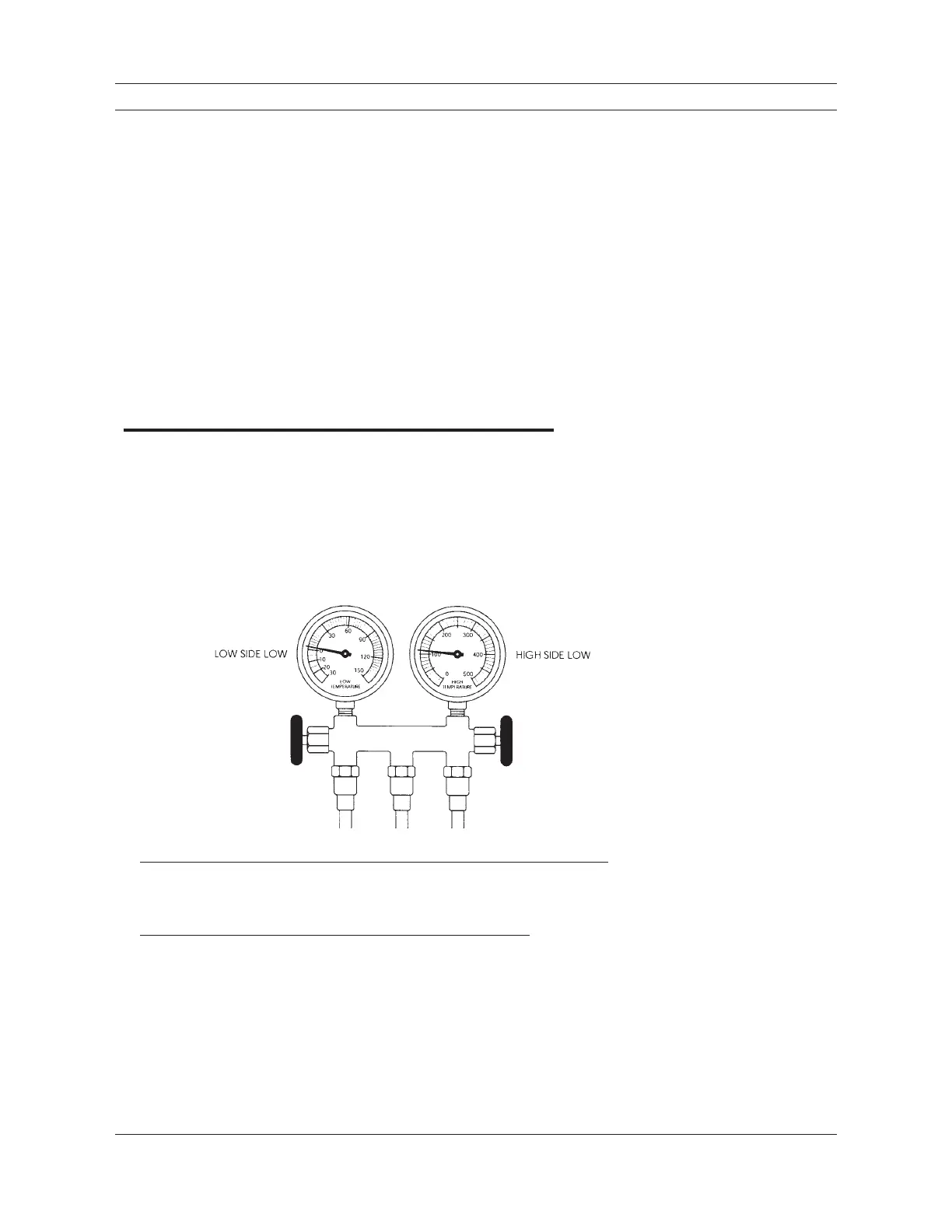III-89
Start the engine and set to a fast idle of 1200 to 1500 RPM. Turn on the air con-
ditioner. After a quick in-cab performance test of control function, blower speeds
and air flow, set the AC system controls to maximum cooling and blower speed
on high. All windows must be closed. If cab temperature is hot (rig has been sit-
ting in the sun with the windows closed), open the windows for a minute or so to
let the hot air out. Run the engine and air conditioner about five minutes for the
system to stabilize. In hot humid weather or where the AC condenser can·t re-
ceive adequate air flow from the engine fan you may have to use a floor mounted
fan to force sufficient air flow through condenser fins. This helps to stabilize the
system by simulating ram air flow found under normal operating conditions.
When a vehicle has a tilt cab or hood and the condenser is part of the grill, you
must use the floor fan to get air to the condenser. You could tilt the cab or hood
back to normal position, carefully routing the manifold gauge set and hoses away
from moving parts. Then place the gauges so you can read system pressure.
Troubleshooting by Manifold Gauge Set Readings
The series of figures that follow (Figures 8-6 through 8-15) show gauges with typical
readings indicating AC system problems. Each figure is followed by troubleshooting
tips, probable causes for the gauge readings shown, and appropriate service and repair
procedures.
Low Refrigerant Charge in the System
Tip: You see bubbles in the sight glass. The air from vents in the
cab is only slightly cool.
Cause: Insufficient refrigerant (charge) in the system.
Troubleshooting & Service Procedures
Figure 8-5
Gauge reading, low refriger-
ant charge in the system.

